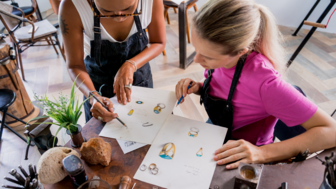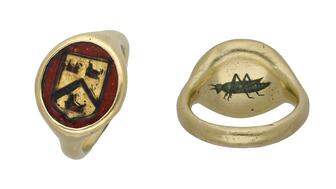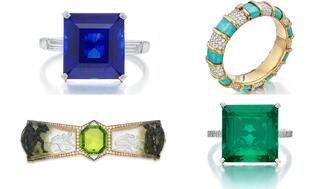On Data: January Was a ‘Mixed Bag’ for Independent Jewelers
Sherry Smith dishes on the month’s highs and lows and the two categories consumers were loving ahead of Valentine’s Day.

Following a landmark year in 2021, independent jewelry retailers faced the daunting task of navigating through the murky waters of economic uncertainty, supply chain dilemmas, and the ever-rising cost of living.
The annual goal-setting call, a tradition for many businesses, became a forum for voicing concerns and speculating about the industry’s future amid such turbulence.
Yet, as we revisited these conversations at the onset of 2023 and now in 2024, a pattern of cautious optimism has emerged, driven by the easing of global recession fears, slightly lower interest rates, consistently low unemployment rates, and a budding rise in consumer confidence.
So, what has this meant for retail so far in 2024? For independent jewelers, January was a mixed bag.
Despite a 5 percent dip in number of units sold, a robust 6 percent increase in the average retail sales value buoyed gross sales by 1 percent.
This nuanced performance prompts a deeper inquiry into the decline in units sold, a trend that predates the pandemic and possibly is linked to the normalization of marriage rates post-2021/2022’s “overcorrection” and the diversification of consumer spending.
The strategic shift towards higher-priced items appears to be a silver lining, enabling jewelers to sustain, if not surpass, the sales highs of previous years.
The diamond sector, often regarded as the industry’s heartbeat, experienced its own set of fluctuations in January.
The month saw a slight contraction of 3 percent in units sold, yet an uptick of 4 percent in average sale prices ensured modest gross sales growth of 1 percent.
Notably, the diamond bridal segment—which encompasses complete diamond engagement rings, semi-mounts, loose diamonds, and diamond wedding bands—sparkled, with a promising 2 percent increase in units sold and a 1 percent increase in gross sales, possibly signaling a refreshed consumer interest in both natural and lab-grown diamonds.
Engagement rings, specifically, and diamond bracelets outshone other segments of the diamond sector, recording significant growth in gross sales, 14 percent and 15 percent respectively, a testament to their timeless appeal.
Unfortunately, the month wasn’t as promising for all categories.
Gross sales of loose diamonds declined 7 percent in January while units sold increased 6 percent. Average retail sale was down 12 percent.
Pearl jewelry also faced hurdles, although some retailers managed to offset the decline in units sold with a higher average sale price, resulting in a 1 percent increase in gross sales.
Both colored stone and sterling silver jewelry struggled to maintain their ground, challenged by shifts in consumer preference and spending priorities.
The market for precious metals jewelry (platinum or gold, no stones), meanwhile, remained relatively unchanged in January, with a 4 percent decrease in unit sales counterbalanced by a 4 percent increase in the average retail price.
Precious metal fashion rings emerged as a standout category, exhibiting a remarkable 27 percent surge in sales. This was accompanied by 8 percent growth in units sold and an impressive 18 percent rise in the average retail price, highlighting their growing popularity and value in the market.
Watch sales experienced a modest 1 percent increase in gross sales, with the 9 percent rise in average retail prices offsetting the 7 percent decline in number of units sold.
Custom jewelry took center stage, with a remarkable 86 percent surge in sales and a 95 percent jump in average retail price.
Overall, service revenue grew 42 percent despite a 5 percent dip in units sold.
The early weeks of February, crucial for Valentine’s Day sales, mirrored January’s trends to some extent but also offered glimpses of resilience within the diamond bridal and precious metals jewelry categories.
Despite a general downtrend in gifting jewelry for Valentine’s Day, independent jewelers managed to hold the line, with sales down less than 1 percent, unit sales down 4 percent, and average retail sale increasing 3 percent, illustrating the industry’s adaptability and enduring charm.
In a positive shift from recent trends, both gross sales and average retail price increased 3 percent for the diamond bridal category, while the volume of units sold remained steady.
The diamond fashion sector, however, experienced a downturn across all major performance metrics, with sales falling 9 percent, units sold decreasing 6 percent, and the average retail sale dipping 3 percent.
In contrast, colored stone jewelry sales remained stable in the early weeks of February, with a 7 percent increase in average retail price offsetting a 7 percent decline in the number of units sold.
Pearl jewelry faced a significant challenge, with gross sales dropping 11 percent, unit sales down 4 percent, and average retail price declining 7 percent.
On a brighter note, precious metals jewelry saw a modest uptick of 2 percent in gross sales and a 4 percent increase in average retail price despite a 2 percent decline in unit sales.
Sterling silver jewelry had mixed results, with a 3 percent rise in average retail price not enough to counteract an 11 percent decrease in unit sales and a 9 percent drop in gross sales.
While independent jewelers’ results were mixed in the weeks leading up to Feb. 14, there were two categories that consumers showed major love for—watches and services.
The watch category demonstrated impressive growth across the board, with a remarkable 27 percent increase in gross sales, a 1 percent uptick in unit sales, and a substantial 20 percent rise in average retail price.
Demand for services surged with a 27 percent increase in gross sales and an even more impressive 36 percent jump in average retail sales, although this was tempered somewhat by a 6 percent decline in unit sales.
“The jewelry industry’s resilience and adaptability are its greatest assets. Independent jewelers, in particular, are poised to thrive.” — Sherry Smith
Upon reflecting on these developments, it’s evident the jewelry industry’s journey through 2024 will be not only about overcoming challenges but also seizing the opportunities that come with changing consumer behaviors, preferences, and values.
Independent jewelers, with their unique position at the intersection of tradition and innovation, are well-equipped to navigate this landscape.
As we look ahead, the jewelry industry’s resilience and adaptability are its greatest assets.
Independent jewelers, in particular, are poised to thrive, drawing on their deep understanding of consumer desires and their ability to craft meaningful, memorable experiences.
The road ahead may be fraught with uncertainties but the industry’s collective spirit and dedication to excellence undoubtedly will pave the way for a future as brilliant as the gems it cherishes.
The Latest

The heist happened in Lebec, California, in 2022 when a Brinks truck was transporting goods from one show in California to another.

The 10-carat fancy purple-pink diamond with potential links to Marie Antoinette headlined the white-glove jewelry auction this week.

The Starboard Cruises SVP discusses who is shopping for jewelry on ships, how much they’re spending, and why brands should get on board.

The Seymour & Evelyn Holtzman Bench Scholarship from Jewelers of America returns for a second year.

The historic signet ring exceeded its estimate at Noonans Mayfair’s jewelry auction this week.


To mark the milestone, the brand is introducing new non-bridal fine jewelry designs for the first time in two decades.

The gemstone is the third most valuable ruby to come out of the Montepuez mine, Gemfields said.

The countdown is on for the JCK Las Vegas Show and JA is pulling out all the stops.

Founder and longtime CEO Ben Smithee will stay with the agency, transitioning into the role of founding partner and strategic advisor.

Associate Editor Natalie Francisco shares 20 of her favorite pieces from the jewelry collections that debuted at Couture.

The top lot was a colorless Graff diamond, followed by a Burmese ruby necklace by Marcus & Co.

Gizzi, who has been in the industry since 2001, is now Jewelers of America’s senior vice president of corporate affairs.

Luca de Meo, a 30-year veteran of the auto industry, will succeed longtime CEO François-Henri Pinault.

Following visits to Vegas and New York, Botswana’s minerals minister sat down with Michelle Graff to discuss the state of the diamond market.

The “Your Love Has the Perfect Ring” campaign showcases the strength of love and need for inclusivity and representation, the jeweler said.

The former De Beers executive is the jewelry house’s new director of high jewelry for the Americas.

The New York Liberty forward is the first athlete to represent the Brooklyn-based jewelry brand.

Take a bite out of the 14-karat yellow gold “Fruits of Love Pear” earrings featuring peridots, diamond stems, and tsavorite leaves.

The one-day virtual event will feature speakers from De Beers, GIA, and Gemworld International.

The California-based creative talks jewelry photography in the modern era and tackles FAQs about working with a pro for the first time.

Al Capone’s pocket watch also found a buyer, though it went for less than half of what it did at auction four years ago.

The foundation has also expanded its “Stronger Together” initiative with Jewelers for Children.

Assimon is the auction house’s new chief commercial officer.

The De Beers Group CEO discusses the company’s new “beacon” program, the likelihood diamonds will be exempt from tariffs, and “Origin.”

The Danish jewelry giant hosted its grand opening last weekend, complete with a Pandora pink roulette wheel.

Industry veteran Anoop Mehta is the new chairman and independent director of the IGI board.

The winners of the inaugural “Kering Generation Award x Jewelry” are student Lee Min Seo and China-based startup Ianyan.



























